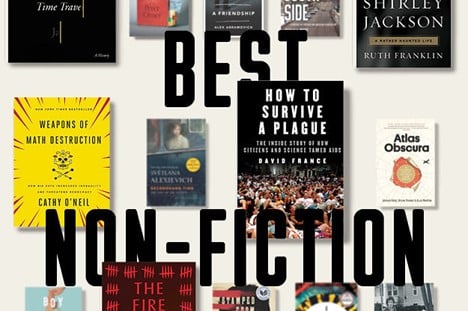|
Getting your Trinity Audio player ready...
|
1. Einstein’s Unfinished Revolution By Lee Smolin:
Like the little kid in Hans Christian Anderson’s fantasy, Lee Smolin, a hypothetical physicist at the Perimeter Institute in Waterloo, Canada, gets a kick out of bringing up that the heads of contemporary quantum physical science wear shockingly scarcely any learned garments. Their hypotheses are muddled. No discoveries might actually adulterate them. What’s more, they don’t clarify perceptible reality. Smolin proclaimed battle on string scholars, specifically, in 2006 with The Trouble with Physics, and there’s thoroughness, just as truthfulness, to his progressing evaluate. Hypothesis should offer a sensible clarification of how the world functions, not supplant it with a solipsistic numerical hypothesis, anyway lavish. In going gaga for our math, we have come loose from the genuine.
Einstein detested quantum hypothesis. So did Louis de Broglie, who previously anticipated the wave-like parts of issue. So did Erwin Schrödinger, whose falling wave capacities talented us that famous undead feline allegory. It fulfills nobody – except for who will project the principal stone? Pundits say Smolin is wasting time. Champions say he has quantum itself on the run.
2. A Crack in Creation: By Jennifer Doudna and Samuel Sternberg:
With three years’ knowing the past, we can securely say that “beast” doesn’t start to depict the scale and tremendousness of Duodena’s logical accomplishment. She was the researcher who guided and drove the work to saddle the genome-altering frameworks that happen normally in microscopic organisms.
In the event that that doesn’t mean a lot, maybe the abbreviation will: CRISPR permits us to reorder hereditary data. Distinguishing a quality, working out what it did and afterward changing it to accomplish something different, or improve, was a phenomenal enough capacity, gained somewhat longer than 10 years prior, and it kept analysts and ethicists conscious considering what the outcomes of this work would be for mankind and the planet. In those days, however, the entire cycle could require months, even years. With CRISPR, we can play out similar interaction in days.
Doudna and her associate Samuel Sternberg expound very well on the hard join of examination, and catch the adventure of disclosure. Most awesome aspect all, however, they never take their eyes off the principle prize: clarifying how we can utilize CRISPR for great to handle illness, for instance, and deal with the genie that they and others have delivered.
3. A World beyond Physics By Stuart Kauffman:
Stuart Kauffman is a polymath. Initially clinical alumni, he is likewise prepared in organic chemistry, hereditary qualities, material science and reasoning, a beneficiary of a MacArthur Fellowship and a Wiener Medal. What’s more, he can compose. In this remarkable and phenomenally discernible re-assessment of his labor of love, Kaufmann clarifies how life emerges: how sub-atomic machines can put together into limited frameworks that build and amass their own working parts. Advancing by characteristic determination, these protocells then make new specialties into which further novel animals can arise. The variety we see is self-building, self-spreading – and its improvement is difficult to anticipate.
Kaufmann dodges void philosophizing. Yet, the ramifications of his work are overwhelming. In a universe containing an expected 100 billion heavenly bodies, advancing life could be all over the place. In the midst of such incessant imagination, says Kaufmann, we can’t anticipate how the universe will advance. Material science is deficient to manage us through an organic universe. He contends that science is a powerless device, scarcely ready to fathom the transformative excursion of single species on a solitary planet. Something else, something new – an altogether new study of frameworks – may yet be anticipating revelation.
4. Brain Fixers By Anne Harrington:
In contrast to different specialists, therapists can’t look into a magnifying instrument and see the organic reason for the diseases they treat. They’re stuck in the premodern time, utilizing the outward appearances of an infection to devise determinations and medicines, rather in the manner in which specialists used to deal with ambiguous illnesses like ague and dropsy with blood draining and mustard mortars.
In Mind Fixers, student of history of neuroscience Anne Harrington clarifies what happened when yearning twentieth century researchers, baffled by their crude control, begun to guarantee a lot for their work. Right off the bat in the twentieth century, psychiatry lost the wooly, patient-focused methodologies of psychotherapy. Analysts completely expected that logical investigation would uncover the valid, organic reasons for mental torment. Yet, it didn’t occur.
A few groups do react well to the “one-size-fits-all” pharmacological and surgeries current psychiatry has created. For each situation, however, the treatment starts things out, frequently coincidentally, and clarifications for its adequacy are either presumptive or missing.
The historical backdrop of psychiatry is no list of brave revelation. It is the useful example of what happens when the world doesn’t unload the manner in which our feeling of reason anticipates that it should. The mind is the most perplexing item we are aware of in the universe. Specialists working on it with their little picks of target study are not in the slightest degree confused, at the same time, says Harrington, in this regularly stunning however outstandingly reasonable and prudent history, they can’t anticipate moment results.

